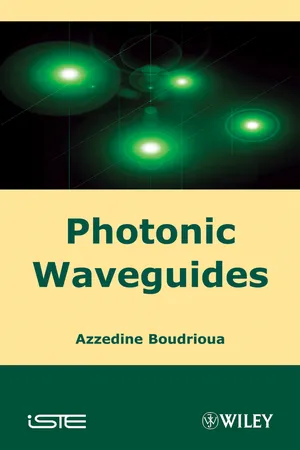
- English
- ePUB (mobile friendly)
- Available on iOS & Android
About This Book
This book presents the principles of non-linear integrated optics. The first objective is to provide the reader with a thorough understanding of integrated optics so that they may be able to develop the theoretical and experimental tools to study and control the linear and non-linear optical properties of waveguides.
The potential use of these structures can then be determined in order to realize integrated optical components for light modulation and generation. The theoretical models are accompanied by experimental tools and their setting in order to characterize the studied phenomenon. The passage from theory to practice makes the comprehension of the physical phenomena simple and didactic.
The book also gives a presentation of the industrial applications of the integrated optical components. The studied topics range from the theory of waveguides and the linear and non-linear optical characterization techniques to photonic crystals. This last field constitutes a major challenge of photonic technologies of the 21st century.
Frequently asked questions
Information
Chapter 1
Optical Waveguide Theory

1.1. Principles of optics
1.1.1. Total reflection phenomenon













1.1.2. Parallel-face plate




Table of contents
- Cover
- Title Page
- Copyright
- Foreword
- Acknowledgments
- Introduction
- Chapter 1: Optical Waveguide Theory
- Chapter 2: Optical Waveguide Fabrication Techniques
- Chapter 3: Optical Waveguide Characterization Techniques
- Chapter 4: Non-linear Effects in Integrated Optics
- Chapter 5: The Electro-optic Effect in Waveguides
- Chapter 6: Photonic Crystal Waveguides
- Conclusion
- Index